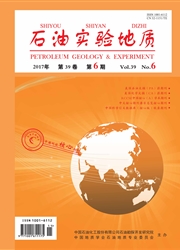

 中文摘要:
中文摘要:
通过对比分析与热化学硫酸盐还原反应(TSR)相关的模拟实验研究和地质实际研究的异同后认为,TSR模拟实验能够再现地质实际过程的某些现象,如生成物、反应温度和催化剂等。但目前的TSR模拟实验与地质实际过程之间存在较大的差距,TSR模拟实验反应物相对简单,实验时间有限,催化剂较少,致使实际地质过程中存在的一些复杂连锁反应不能在模拟实验中发生,一些反应也没有达到地质条件下反应进行的程度,因此难以再现地质实际情况下观察到的诸多现象。TSR模拟实验与地质实际情况下硫化氢的硫同位素和烃类组分的碳同位素分馏存在较大的差异。未来的TSR模拟实验研究应设计更为复杂的反应物和反应体系,应用多种反应催化剂,以深入探讨TSR的反应机理和动力学过程,有效解决与TSR相关的地质地球化学问题。
 英文摘要:
英文摘要:
The similarities and differences between simulation experiments on thermochemical sulfate reouction (TSR) and geological observations have been compared. Some results of the TSR simulation experiments are consistent with the natural TSR process in terms of products, reaction temperature, catalysts, etc. ; however, there is a big gap between current TSR simulation experiments and actual geological process. Owing to relatively simple reactants, limited experimental time as well as comparatively less catalysts, some complex chain reactions during the actual geological processes fail to occur in the TSR simulation experiments, preventing some of the reactions from achieving the extent of reaction under geological conditions. Therefore, the TSR simulation experiments fail to reproduce the phenomena observed under actual geological conditions. Significant differences exist between simulation experiments and geological observations on the sulfur isotopic fractionations of hydrogen sulphide and the carbon isotopic fractionations of n-alkanes. In order to carry forward the study of TSR reaction mechanisms and dynamics and to efficiently figure out TSR-related geological and geochemical issues, the future TSR simulation experiments should use more complex reactants, systems and all kinds of catalysts.
 同期刊论文项目
同期刊论文项目
 同项目期刊论文
同项目期刊论文
 期刊信息
期刊信息
